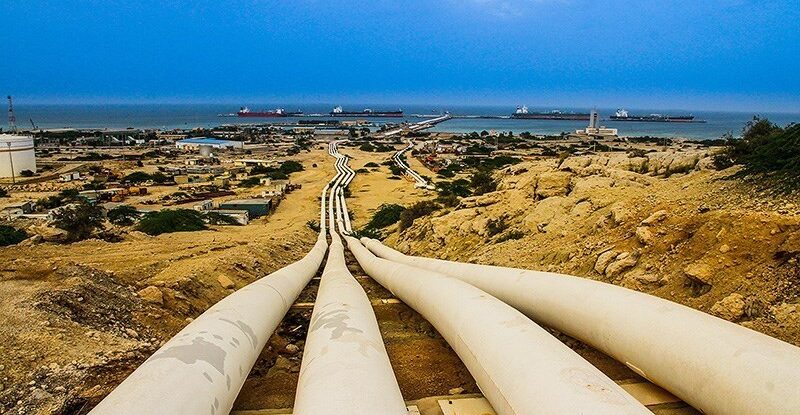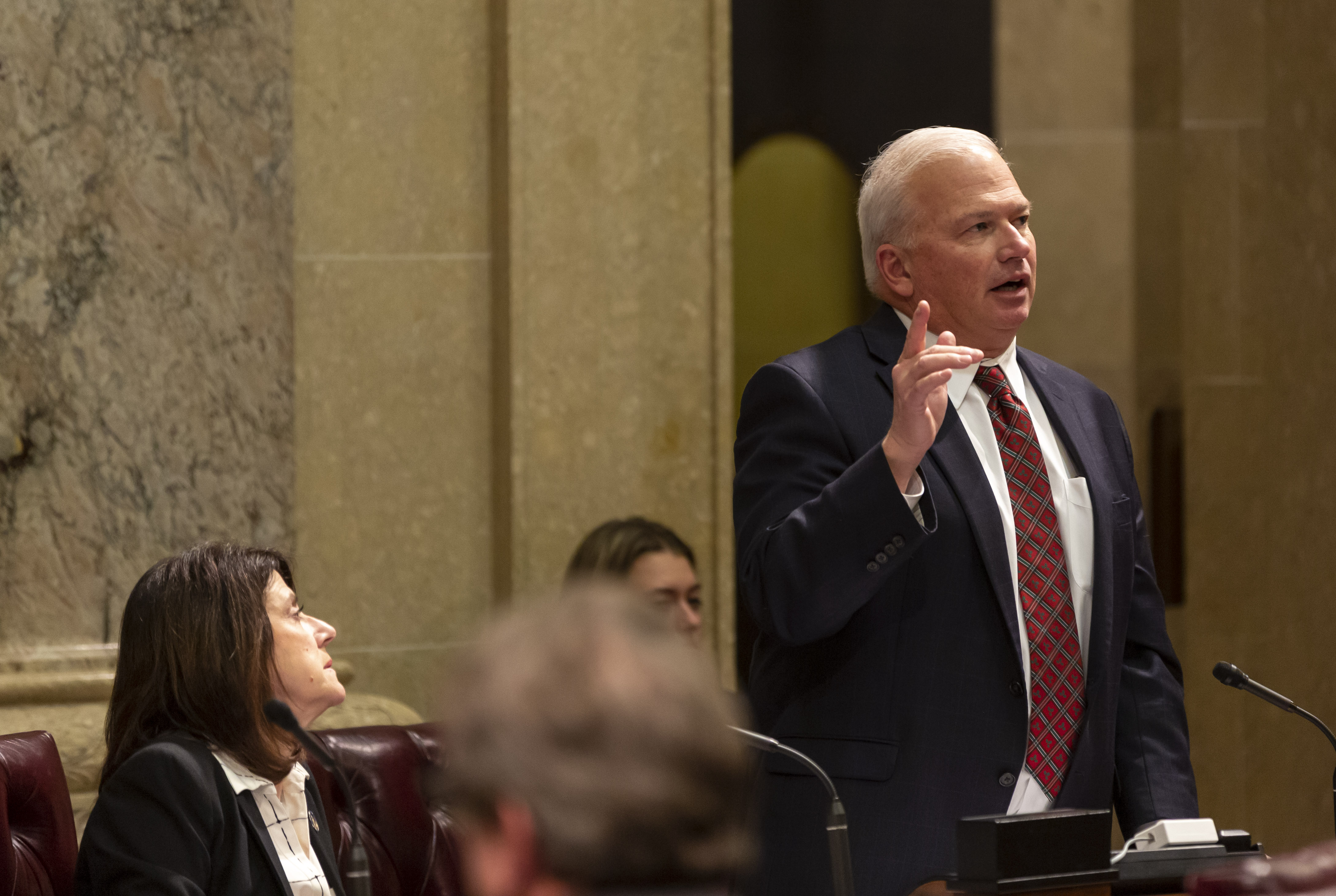
PULSE POINTS
❓WHAT HAPPENED: Iran has warned it may shut the Strait of Hormuz, a vital oil transit route, if the U.S. intervenes in its conflict with Israel.
👤WHO WAS INVOLVED: Senior Iranian officials, including Ali Yazdikhah and Behnam Saeedi, along with U.S. President Donald J. Trump and Iranian Supreme Leader Ali Khamenei.
Your free, daily feed from The National Pulse.
📍WHEN & WHERE: Statements were made on Wednesday and Thursday, with escalating tensions in the Middle East and discussions in Washington, D.C., and Geneva.
💬KEY QUOTE: “If the United States officially and operationally enters the war in support of the Zionists, it is the legitimate right of Iran to disrupt their oil trade’s ease of transit.” – Ali Yazdikhah, a senior Iranian lawmaker.
🎯IMPACT: A closure of the Strait of Hormuz could disrupt global oil markets, prompt a strong military response from regional powers like Saudi Arabia, and escalate the conflict further.
IN FULL
Iran has threatened to close the Strait of Hormuz, a key chokepoint for global oil transit, if the United States becomes directly involved in its conflict with Israel. Ali Yazdikhah, a senior Iranian lawmaker, stated, “If the United States officially and operationally enters the war in support of the Zionists, it is the legitimate right of Iran to disrupt their oil trade’s ease of transit.”
Behnam Saeedi, a member of Iran’s National Security Committee presidium, echoed this, saying that closing the strait is “one of the potential options.” The remarks come as tensions rise in the region, with U.S. President Donald J. Trump weighing the possibility of military strikes on Iran’s nuclear facilities.
The Strait of Hormuz is a critical maritime passage that handles approximately 26 percent of the world’s oil trade. The International Energy Agency (IEA) has warned that any disruption to the flow of oil through the strait would have significant consequences for global markets. Historically, Iran has demonstrated its capacity to threaten shipping in the strait, using tactics such as deploying mines and targeting oil tankers during the Iran-Iraq War. Notably, if Iran were to deploy a significant number of mines in the strait’s waters, it could effectively close the passage to ships for the foreseeable future.
Recent satellite photos and shipping analysis indicate that Iran is rapidly moving to fill its oil tanker fleet and disperse it well outside the Persian Gulf and into the open ocean. A bulk of the shipping traffic moving through the Strait of Hormuz in recent days is attributed to the Iranian oil tanker fleet departing the country’s primary petroleum storage hub, Kharg Island. Consequently, satellite images of Kharg Island show its oil storage containers all to be near capacity, suggesting Iran intends to fill and disperse as many tanker ships in its fleet as possible before it makes a possible move to mine the waters of the strait.
During Thursday’s White House press briefing, Press Secretary Karoline Leavitt read a statement from President Trump, laying out a timeline for potential U.S. action: “Based on the fact that there’s a substantial chance of negotiations that may or may not take place with Iran in the near future, I will make my decision whether or not to go within the next two weeks.” Meanwhile, Iranian Supreme Leader Ayatollah Ali Khamenei warned late Wednesday, “The Americans should know that any U.S. military intervention will undoubtedly be accompanied by irreparable damage.”
Diplomatic efforts remain ongoing, with Germany, France, and Britain set to meet Iranian officials in Geneva on Friday for nuclear talks.
Join Pulse+ to comment below, and receive exclusive e-mail analyses.
show less

PULSE POINTS
❓WHAT HAPPENED: The U.S. Navy announced it has fulfilled its recruitment goals months ahead of schedule, following a similar announcement from the Army earlier this year.
👤WHO WAS INVOLVED: U.S. Navy, Navy Secretary John Phelan, Defence Secretary Pete Hegseth, President Donald J. Trump.
Your free, daily feed from The National Pulse.
📍WHEN & WHERE: The announcement was made on June 18, on X.
💬KEY QUOTE: “Those in uniform today are sailing forward, and the next generation is already preparing to take the watch. To our newest sailors, welcome to the fleet.” — Navy Secretary John Phelan.
🎯IMPACT: The recruitment surge shows the positive effects of President Trump’s policies toward the Armed Forces.
IN FULL
The U.S. Navy has announced that it has already met its recruitment goals three months ahead of schedule, just weeks after the U.S. Army made a similar announcement. Navy Secretary John Phelan announced on June 18 that the Navy had added 40,600 new sailors to its ranks.
“This milestone reflects more than numbers. It reflects the drive of our recruiters, the innovation of our team, and the courage of thousands of Americans who stepped forward to serve,” Phelan said. “Those in uniform today are sailing forward, and the next generation is already preparing to take the watch. To our newest sailors, welcome to the fleet,” he added.
The announcement comes after the Army stated earlier this year that it had met recruitment goals months ahead of schedule, with 61,000 fresh recruits recorded.
Under the prior Biden regime, U.S. military branches struggled with recruitment goals, partly due to a shift to focusing on woke issues and diversity, equality, and inclusion (DEI) policies. For instance, the Army missed recruitment goals by 25 percent in 2022. The situation was exacerbated by Biden having unvaccinated servicemen discharged by the thousands.
Current Defense Secretary Pete Hegseth announced earlier this year that he was more interested in reviving the Armed Forces’ “warrior ethos” and scrapped DEI policies. He also moved to reenlist veterans removed from service for declining to be injected with COVID-19 vaccines.
President Donald J. Trump organized a massive parade last weekend for the 250th anniversary of the founding of the U.S. Army, underscoring his administration’s appreciation for the nation’s military.
Join Pulse+ to comment below, and receive exclusive e-mail analyses.
show less

 1 week ago
1
1 week ago
1










 English (US) ·
English (US) ·